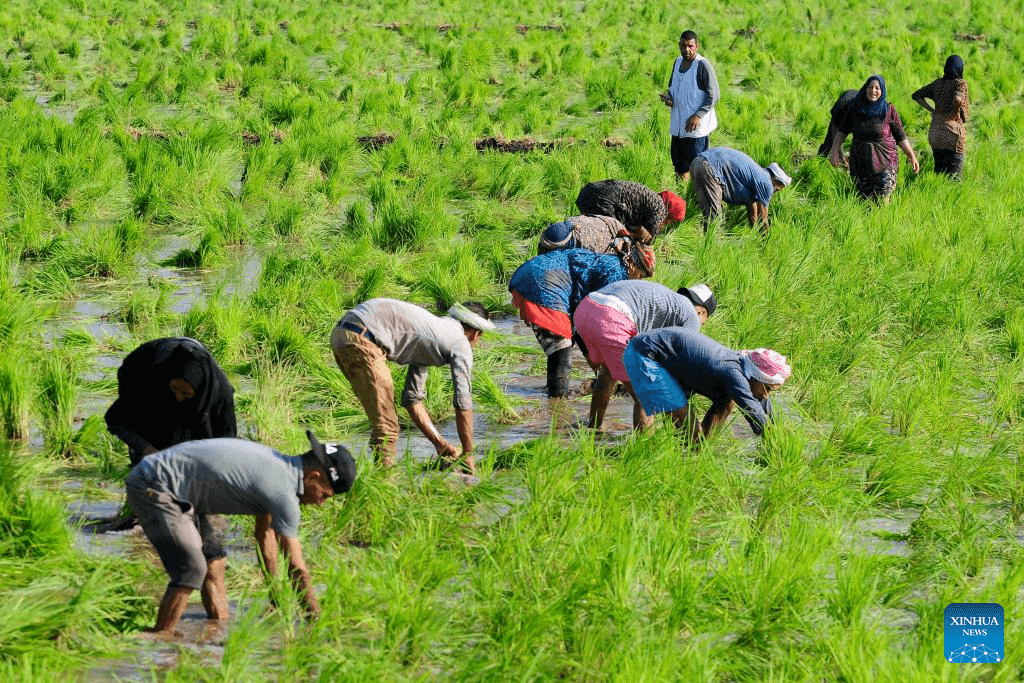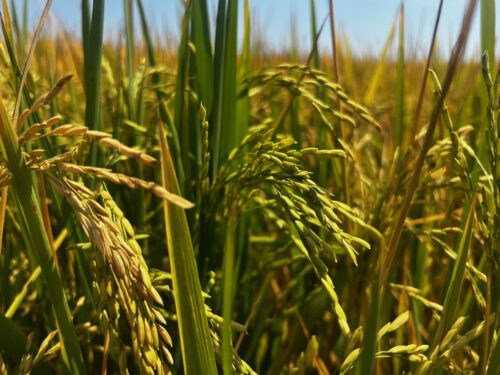Tags
USA-grown rice rules domestic market
American consumers choose rice grown and packaged in the United States 80% of the time.

Louisiana farmer Kevin Berken teaches consumers how to identify rice Grown in the USA during a presentation at the Yellow Rails & Rice birding festival. PAM CARAWAY
As American consumers continue to embrace the local food movement some industries are capitalizing on USA-grown. The rice industry is one of those.
Of all the rice consumed in the United States, 80% is grown here.
For many involved in agriculture, it’s an unbelievable domestic consumption number for any commodity. For those who promote USA-grown rice, that market share is not high enough.
“It should be 100%, but that’s another story,” said Steve Linscombe, director of The Rice Foundation & Leadership Class Program. Linscombe, senior rice breeder emeritus at Louisiana State University, has been promoting rice through his work at LSU and now at The Rice Foundation for more than four decades. Realistically, he knows grabbing 100% of U.S. market share is not likely.
“The vast majority of what we’re importing is stuff that we couldn’t grow here like basmati and Thai jasmine,” Linscombe said.
The jasmine share of the market, however, is changing. Since the pandemic American farmers, particularly those who grow rice in southwest Louisiana, increased domestic sales of jasmine rice. Jasmine rice acres in 2023 topped 20,000, or about 10 times the acres they were planting to jasmine varieties just a few years ago.
“Our jasmine is getting pretty competitive with imported Thai jasmine,” Linscombe said. That said, he noted: “We’re making inroads on Thai jasmine, but we’re not going to replace it.”
Subsidized imports challenge rice market
The greater challenge for U.S. rice farmers is subsidized imports.
“The challenge for now and also for the future is cheap imported rice,” said Betsy Ward, CEO of USA Rice.
The domestic industry is particularly concerned about rice imported from India, where the government substantially subsidizes production.
“It is chipping away at some of our markets,” Ward said. “We can’t compete. We can’t produce it as cheaply as they can because the government subsidizes it.”
Linscombe agrees.
“India is as bad as it gets,” he said. “They’re subsidizing up to 80% of production costs.”
U.S. rice shares strong story
To maintain its position in the domestic market, U.S. rice industry leaders said they continue to work to tell a story that resonates with consumers – including a focus on family farmers and partnerships with organizations like Ducks Unlimited to help show the sustainability in rice production.
Marketing support includes the Grown in the USA symbol that rice brands can license from USA Rice. The federation also works to educate consumers on the safety and sustainability of US-grown rice, Ward said.
“We work to ensure that Americans are comfortable eating US-grown rice, and they don’t worry whether it’s safe,” Ward said.
And USA Rice helps consumers find those brands by offering a symbol that its member organizations conveniently place on their products and in their marketing content.
Since rice primarily grown in only six states, all dominated by family farms, locally produced rice for most Americans means USA-grown.
Here’s the round numbers from the 2023 certified acreage breakdown for the states where rice primarily is grown, courtesy of USDA’s Farm Service Agency:
- Arkansas, 1.4 million acres
- California, 500,000 acres
- Louisiana, 461,000 acres
- Mississippi 119,000 acres
- Missouri 200,000 acres
- Texas, 145,402
Additionally, Florida planted 530 certified acres. Linscombe noted Florida Crystals Corp. also planted about 25,000 acres, but that company doesn’t certify its acreage. Illinois planted 2,067 acres and Tennessee contributed 362 planted acres.
Rice production is a small segment of the U.S. agricultural landscape, Linscombe noted, but it’s fairly stable. The great variable in the equation is water availability. He reported that California can fluctuate by 200,000 acres or more, depending on water levels at Oroville Lake and Lake Shasta. Texas, where production is dependent on water from the Colorado River also can fluctuate based on availability.
In each case, Linscombe said, “if they’ve got the water, they’ll grow the rice.”
Another industry variable is row crop profitability. Competition for planted acres influences rice acreage in Arkansas, Missouri and Mississippi, Linscombe said. Mississippi in particular can move in and out of various crops. Nearly down to 100,000 acres in 2023, Linscombe noted farmers in that state planted around 300,000 acres just a few years ago.
“All in all, I think we’re going to be somewhere between 2 and 3 million acres most years,” Linscombe said. “We’ve been there for a long time.”
https://www.farmprogress.com/rice/usa-grown-rice-rules-domestic-marketPublished Date: December 15, 2023






